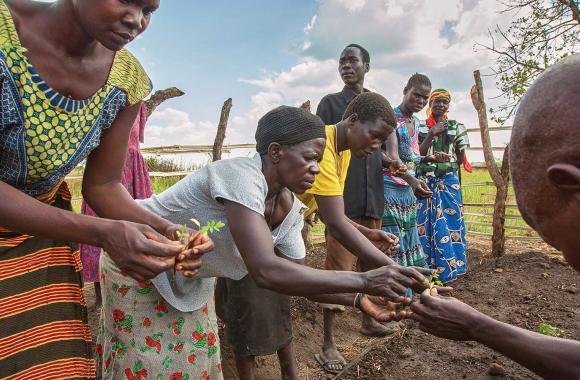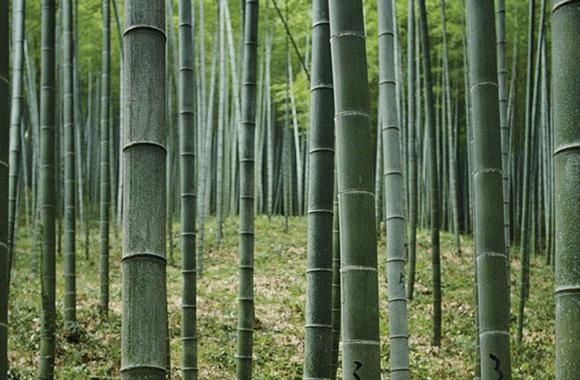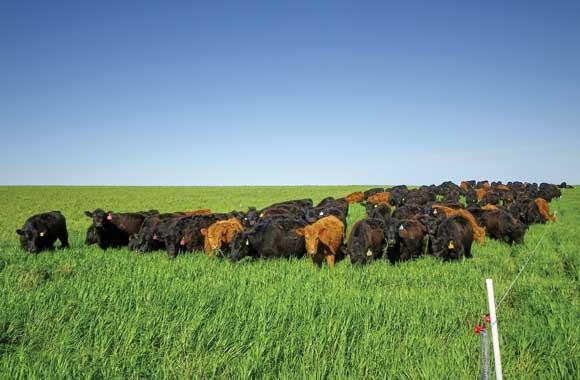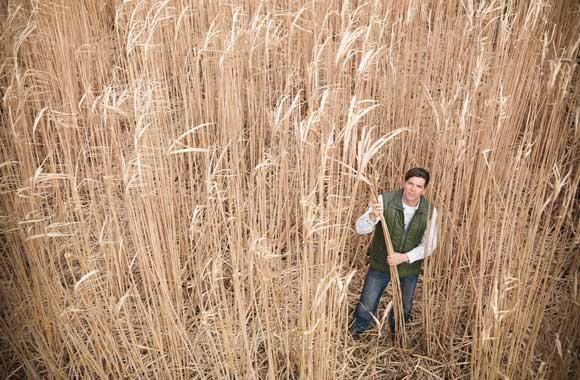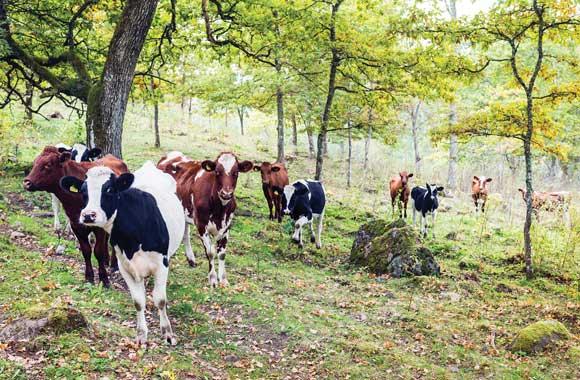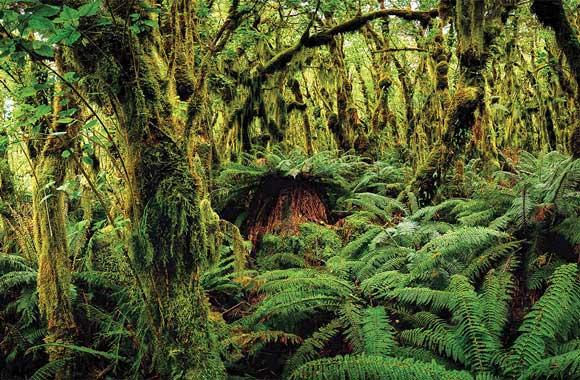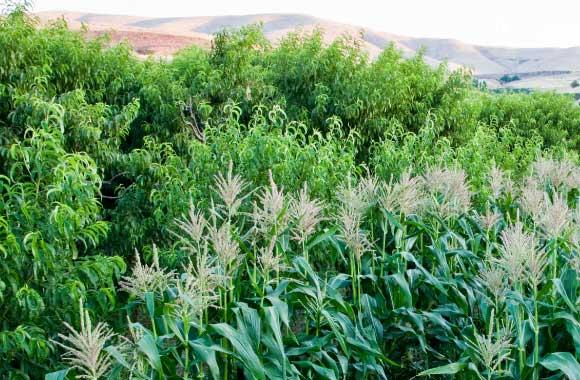Tree Plantations (on Degraded Land)
Degraded lands present potential locations for tree plantations. Managed well, they can restore soil, sequester carbon, and produce wood resources in a more sustainable way.
Reduced/Sequestered
2020–2050
To Implement
Operational Savings
Impact
As of 2018, 294.1 million hectares of land were used for tree plantations on degraded land. Establishing tree plantations on an additional 112–174 million hectares of marginal lands can sequester 22.04–35.09 gigatons of carbon dioxide by 2050. The use of marginal lands for afforestation also indirectly avoids deforestation that otherwise would be done in the conventional system. At an initial cost of US$91.89–141.68 billion and lifetime operational cost of US$157.74-–243.37 billion to implement, this additional area of timber plantations could produce a lifetime net profit of US$2.05–3.17 trillion.
Introduction
Degraded pasture and agricultural lands and other lands disturbed by uses such as mining are ripe for strategic planting of trees. Trees create a carbon sink, drawing in and holding on to carbon and distributing it into the soil.
Project Drawdown’s Tree Plantations (on Degraded Land) solution involves the cultivation of trees for timber or other biomass uses on degraded land. Greenhouse gases are sequestered in soils, biomass, and timber. This practice replaces annual cropping on active cropland and other uses of degraded grassland and forest. Tree plantation on degraded land also aims to reduce emissions from deforestation by providing an alternative source of timber, though this impact is not modeled here.
Tree plantation on degraded land has been widely promoted as a land-based climate change mitigation strategy due in part to its high greenhouse gas sequestration rates. Our scenarios are more modest than many. This is because we give other tree-focused solutions with high sequestration rates higher priority, including Tree Intercropping, Silvopasture, Multistrata Agroforestry, Perennial Staple Crops, Tropical Forest Restoration, and Temperate Forest Restoration. Nonetheless, tree plantation on degraded land is of critical importance for mitigation, building material, and restoration of degraded lands.
Methodology
Total Land Area
To evaluate the extent to which a Food, Agriculture, and Land Use sector solution can reduce greenhouse gas emissions and sequester carbon, we need to identify the total land area available for that solution. To avoid double counting, we use an integration model that allocates land area among all of the sector’s solutions. This involves two steps. First, we classify the global land area into agro-ecological zones (AEZs) based on the land cover, soil quality, and slope and assign AEZs to different thermal moisture regimes. We then classify the AEZs into “degraded” and “nondegraded.” Second, we allocate the solutions to AEZs, with the solution most suited to a given AEZ or sets of AEZs assigned first, followed by the second-most-suited solution, and so on. Because it’s hard to predict future changes, we assume the total land area remains constant. Total land areas represent both the implementation and functional unit.
The total area allocated for tree plantation on degraded land is 718 million hectares, and is composed of degraded grassland. Current adoption is estimated at 294 million hectares, based on data from the Food and Agriculture Organization (MacDicken et. al., 2015).
Adoption Scenarios
We based projected adoption of tree plantation on degraded land on historic country-level growth rates from the FAO (MacDicken et. al., 2015), aggregated by region and based on the model projection from the literature (Evans, 2009; Kreidenweis et al., 2016). We developed eight custom scenarios.
We calculated impacts of increased adoption of the Tree Plantations (on Degraded Land) solution from 2020 to 2050 by comparing two scenarios with a reference scenario in which the market share was fixed at current levels.
- Scenario 1: Tree plantation is adopted on 409.28 million hectares of degraded land (57 percent of the total available land area).
- Scenario 2: Tree plantation is adopted on 470.61 million hectares of degraded land (66 percent of the total available land area).
Emissions, Sequestration, and Yield Model
Our sequestration rate is 3.3 metric tons of carbon per hectare per year, based on 29 data points from 13 sources. This is in line with Intergovernmental Panel on Climate Change (IPCC) estimates. We assume that all sequestered carbon is re-emitted at harvest except for carbon stored in timber. We based the average timber yield per hectare per year on meta-analysis and used an average lifespan of 26 years for tree plantations based on the meta-analysis of 36 data points from five sources.
Financial Model
All monetary values are presented in 2014 US$.
The first cost of tree plantation on degraded land is US$668.57 per hectare, based on meta-analysis of 22 data points from nine sources. We assume that first costs for the land use that the Tree Plantations (on Degraded Land) solution is replacing have already been paid, because the land is already in production. Net profit per hectare is US$593.96 per year (based on meta-analysis of 16 data points from 13 sources), compared with US$37.84 per year for the conventional practice (based on 20 data points from 15 sources). Annual operational cost per hectare is calculated at US$123.37 for the solution (based on meta-analysis of 18 data points from 12 sources), compared with US$80.64 for annual cropping (based on nine data points from seven sources). We weighted the financial variables by the percent degraded grassland area in order to get a conservative estimation for our financial analysis.
Integration
Our Agro-Ecological Zone model allocates current and projected adoption of solutions to forest, grassland, rainfed cropland, and irrigated cropland. Adoption of the Tree Plantations (on Degraded Land) solution was constrained by higher prioritization of Project Drawdown food production and forest restoration solutions. On degraded grassland, the Tree Plantations (on Degraded Land) solution was the second-highest priority.
Results
Scenario 1 sequesters 22.04 gigatons of carbon dioxide equivalent greenhouse gases by 2050. The net first cost to implement is US$91.89 billion and the lifetime operational cost is US$157.74 billion. The lifetime net profit is US$2.05 trillion.
Scenario 2 sequesters 35.09 gigatons of carbon dioxide equivalent by 2050. The net first cost to implement was US$141.68 billion, and the lifetime operational cost was US$243.37 billion. The lifetime net profit was US$3.17 trillion.
Discussion
Benchmarks
The IPCC provides a benchmark of 4.0 gigatons of carbon dioxide equivalent per year in 2030 from afforestation, given a price of $100 per metric ton of carbon dioxide (Netz, 2007). Our model sequestered 0.67–1.09 gigatons of carbon dioxide equivalent per year in 2030. This is substantially lower because 1) we prioritize other land uses and 2) we don’t model a price on carbon dioxide. When combined with the Bamboo Production and Perennial Staple Crops solutions, however, emissions reduction in 2030 increased to 1.33–2.45 gigatons of carbon dioxide equivalent per year in 2030.
Limitations
The study has several limitations. One limitation is the use of a single sequestration rate across all climates. The current version of the model does not account for albedo impacts at temperate and boreal latitudes.It would also be desirable to model the impacts of timber replacing carbon and steel in construction, because these materials are emissions-intensive.
Conclusions
Tree plantation on degraded land is already practiced on a wide scale and represents an important carbon sequestration land use. It produces products of critical importance and can help reduce pressure on intact forests. Though not a “silver bullet,” it is an essential component of land-based climate change mitigation efforts.
References
Evans, J. (Ed.). (2009). Planted forests: uses, impacts, and sustainability. Wallingford, UK ; Cambridge, MA: Published jointly by Food and Agriculture Organization of the United Nations and Cabi Pub.
MacDicken, K., Jonsson, O., Pina, L., Marklund, L., Maulo, S., Contessa, V., Adikari, Y., Garziglia, M., Lindquist, E., Reams, G., and D’Annuzio, R. (2015). Global Forest Resources Assessment 2015. How are the World's Forests Changing? (Second edition). Food and Agriculture Organization of the United Nations. Accessed at http://www.fao.org/3/a-i4793e.pdf
Kreidenweis, U., Humpenöder, F., Stevanović, M., Bodirsky, B. L., Kriegler, E., Lotze-Campen, H., & Popp, A. (2016). Afforestation to mitigate climate change: impacts on food prices under consideration of albedo effects. Environmental Research Letters, 11(8), 085001. https://doi.org/10.1088/1748-9326/11/8/085001
MacDicken, K. Jonsson, O., Pina, L., Marklund, L. , Maulo, S. Contessa, V., Adikari, Y., Garzuglia, M., Lindquist, E., Reams, G., and D’Annunzio, R. (2015). Global Forest Resources Assessment 2015: How are the world’s forests changing? (second edition). UN Food and Agriculture Organization (FAO). Accessed at http://www.fao.org/3/a-i4793e.pdf
Netz, B., Davidson, O., Bosch, P., Dave, R., Meyer, L., & others. (2007). Climate change 2007: Mitigation. Contribution of Working Group III to the Fourth Assessment Report of the Intergovernmental Panel on Climate Change. Summary for Policymakers. Climate Change 2007: Mitigation. Contribution of Working Group III to the Fourth Assessment Report of the Intergovernmental Panel on Climate Change. Summary for Policymakers.
What You Can Do
Start a tree-planting campaign in your community.
Support legislation that provides incentives for applying conservation practices to degraded land.
- Expand your knowledge by exploring another Drawdown solution.
Co-benefits
Trees support pollinators that in turn support pollinator-dependent agriculture, providing food for local people.
Trees help retain nitrogen in watersheds, benefiting downstream rivers and lakes.
Tree plantations on degraded land can help enhance biodiversity.


